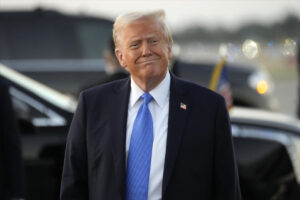Assessing the Current State of Credit Markets Amid Tariff Talk
Recent rhetoric surrounding tariffs from the U.S. administration, especially from President Trump, appears not to have shaken the credit markets considerably. Despite the volatility in trade discussions, credit default swaps (CDS) remain relatively stable, reflecting a certain level of complacency among investors. At Extreme Investor Network, we believe it’s critical to dig deeper into these market behaviors and the implications for long-term investment strategies.
Understanding the Impact of Tariffs on Credit Default Swaps
On Monday, CDS prices showed little significant movement despite increasing trade volume. This comes at a time when the threat of tariffs on goods from trade partners like Mexico and Canada is very much on the cards. Notably, trading volumes in these derivatives surged, more than doubling compared to previous weeks, but subsequently returned to average levels by Tuesday. This scenario suggests that while traders are monitoring developments closely, the perceived risks have not yet permeated the pricing landscape.
According to Gabriele Foa, a portfolio manager at Algebris Investments, the current state of credit markets is characterized by tight valuations. The metrics for high-yield CDS indicate that we haven’t seen such restrained pricing levels being sustained over the past decade, with previous occurrences leading to significant market adjustments within six to nine months.
Market Complacency: A Double-Edged Sword
Despite the caution expressed by some analysts, notably from JPMorgan Chase, there’s a prevailing sense that the market has become overly confident. Analysts at the bank have flagged signs of complacency, suggesting that such high valuations may not be justifiable given the backdrop of geopolitical tensions and the uncertainty surrounding trade policies. The idea of tariffs being a double-edged sword — potentially revitalizing U.S. industries while also hampering exports and overall economic growth — adds layers of complexity to the market’s reaction.
Investment-grade markets in both the U.S. and Europe faced stagnation as Tump’s tariff threats rattled investor sentiment. As borrowers returned to the market later in the week, investors are confronted with a strategic dilemma: Should one divest from companies exposed to tariff risks, or can these firms withstand the pressures imposed by this changing landscape?
The Emergence of Risk Management Strategies
In the wake of recent financial fluxes, there’s been a noticeable shift in how investors approach risk management, particularly in the context of credit exposure. Many are gravitating towards interest income reinvestment strategies rather than sticking with traditional spread tightening bets. Foa poignantly notes that “credit is negatively asymmetric at the moment,” indicating that while one could secure a modest carrying return of 3-4%, the potential for significant losses looms at 10-12%.
Moreover, we see increasing activity in the foreign-exchange options market, where trading has surged to multi-year highs. This behavior indicates a rising demand for downside protection as investors brace for further volatility, potentially driven by geopolitical events and domestic policy shifts.
Strategic Developments and Market Insights
The evolving landscape also highlights several developments worth tracking:
- Credit Markets’ Resilience: Investment-grade markets recovered somewhat, demonstrating the resilience of certain sectors.
- Active Debt Capital Management: Initiatives like Apollo Global Management’s new marketplace for high-grade private assets reflect a trend toward enhancing liquidity and investor access.
- Private Equity’s Adaptability: Firms are strategically reinforcing their positions in distressed companies, often through tighter control over financial restructuring processes.
A Cautious Outlook
With ongoing discussions about tariffs and their potential implications, investors must remain vigilant and adaptable. The current environment presents a unique blend of opportunities and risks. The key takeaway is that while credit markets may show signs of short-term stability amidst chaos, the structural factors at play necessitate a proactive approach to investment strategy.
At Extreme Investor Network, we advocate for a vigilant and informed perspective, encouraging our investors to keep a close eye on emerging trends while preparing for the unexpected shifts that will inevitably come as these geopolitical narratives develop. Stay informed, remain strategic, and never underestimate the power of market dynamics.

